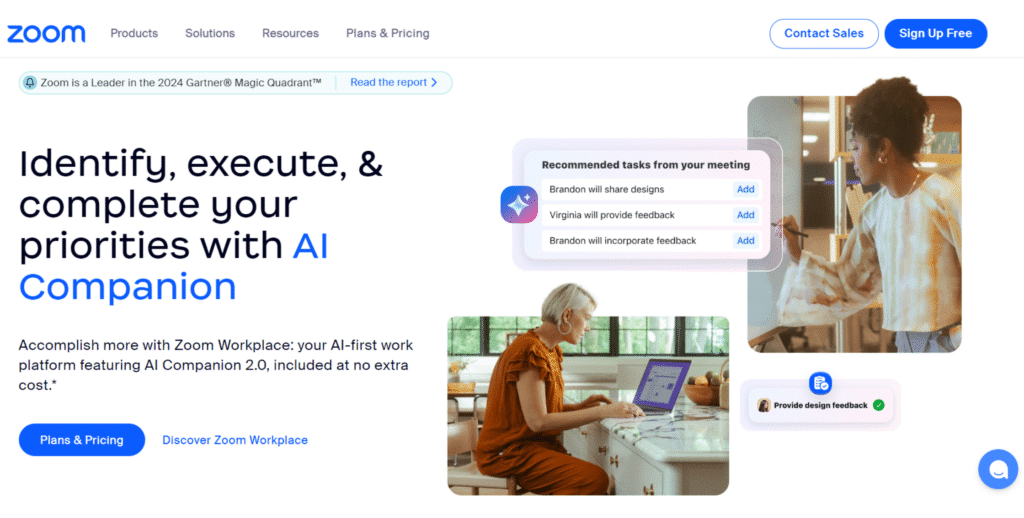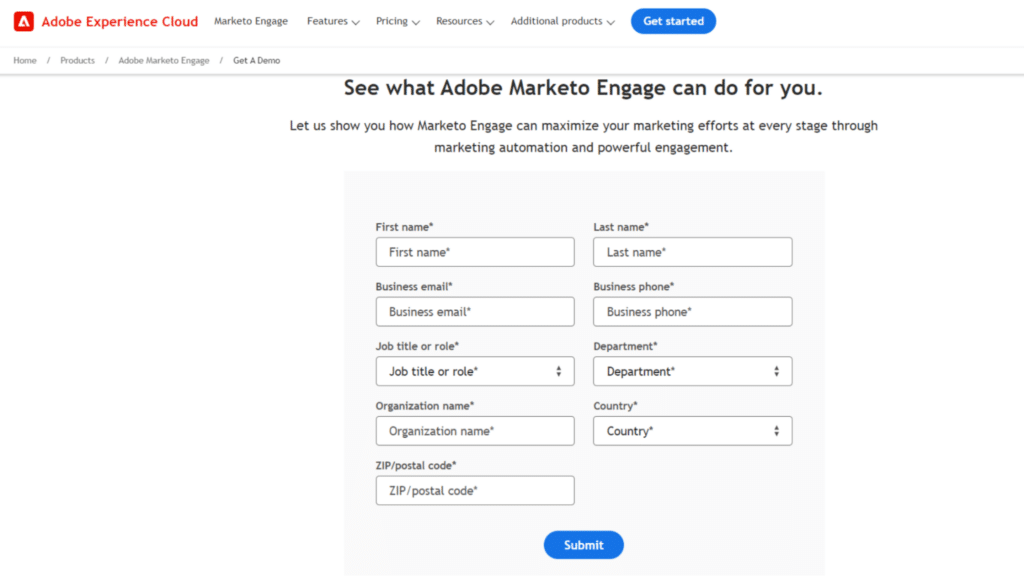Conversion rate optimization (CRO) isn’t just about making a few tweaks – it’s about transforming the whole visitor experience to turn casual traffic into loyal customers! With the average conversion rate hanging around just 2.35%, focusing on CRO can be a game changer.
Companies that make CRO a priority can see some amazing results, with the top 25% hitting conversion rates of 5.31% or more. That’s a serious boost in performance that you don’t want to miss out on!
In this guide, we’ll dive into practical strategies that will supercharge your B2B conversion rates and help you achieve impressive results. Get ready to take your performance to the next level!

Winning B2B Conversion Rate Optimization: 9 Step Guide
The Importance of a Structured CRO Strategy
Before jumping into tactics, it’s important to recognize that conversion rate optimization is not about random tweaks or following one-size-fits-all advice. A well-structured and data-driven approach is essential, especially for B2B companies, where the buyer’s journey is longer and more intricate.
The goal is to create a smooth, seamless experience that effectively guides your potential leads through the entire sales funnel – from initial awareness to the final purchase. Now, let’s walk through the 9 essential steps to help you win at B2B conversion rate optimization.
Step 1: Set Clear and Measurable Goals
Effective conversion rate optimization starts with a strong foundation: setting clear, measurable goals. Vague aspirations like “increase leads” or “boost sign-ups” won’t guide your strategy. Instead, use the SMART framework to define specific outcomes such as increasing demo requests, reducing lead qualification time, or doubling newsletter subscriptions over the next quarter.
These goals should align with broader business objectives, such as improving sales funnel efficiency or lowering customer acquisition costs (CAC). By tying CRO efforts to these measurable benchmarks, you create a roadmap for progress and ensure that optimization work contributes directly to your organization’s bottom line.
Example KPIs for CRO:
- Conversion rate: Percentage of visitors who complete a desired action.
- Lead quality: Measurement of how closely leads match your ideal customer profile.
- Customer acquisition cost: Total spend on marketing divided by new customers acquired.
Step 2: Analyze Website Data
Data is the backbone of CRO. Before you make any changes, it’s essential to understand how users are interacting with your website. Use tools like Google Analytics to gather insights on visitor behavior, including heatmaps, session recordings, and funnel analysis.
Identify key points where users drop off, and analyze their behavior on specific pages. Are users bouncing off your pricing page? Do they abandon forms halfway through? Segment your data by traffic source, device, and user demographics to get a clearer picture of what works and what doesn’t for each type of visitor.
Key Questions to Ask:
- Where are visitors exiting?
- Which CTAs are being clicked (or ignored)?
- How are different segments of users engaging with your content?
Step 3: Optimize User Experience (UX)
B2B buyers expect a seamless user experience (UX), and a poor design can be a major barrier to conversion. Make sure your website loads quickly, is easy to navigate and offers a responsive design across devices. Studies show that even a one-second delay in page load can result in a significant drop in conversions.
To improve UX, streamline the layout of your pages. Don’t overload visitors with too many choices or distractions. Instead, guide them towards a single clear action, like filling out a form or requesting a demo. Mobile optimization is particularly important – B2B buyers are increasingly using smartphones and tablets to conduct research.
Step 4: Craft Compelling Landing Pages
One of the biggest mistakes businesses make is relying on their homepage to do all the heavy lifting. In B2B CRO, well-crafted landing pages tailored to specific offers, buyer personas, or stages in the funnel can dramatically increase conversion rates.
A great landing page focuses on a single goal: delivering the right message to the right audience at the right time. Avoid clutter and ensure that CTAs are easy to find and understand. Use trust signals like testimonials or industry certifications to build credibility. A/B test different elements, such as headlines, images, and CTA buttons, to see what resonates with your audience.
Step 5: Simplify Forms and Conversion Paths
Complex forms are a common point of friction in B2B conversion funnels. The more fields you require, the more likely potential leads are to abandon the form altogether. Instead, reduce the number of fields to only what is necessary at that point in the buyer’s journey.
You can also implement progressive profiling, where you gather more information over time as your relationship with the lead develops. This strategy can help reduce initial friction and ensure a higher rate of completion for your forms. Use tools like Typeform to create interactive, user-friendly forms that make data collection feel less like a chore.
Step 6: Personalize Content and Messages
B2B buyers expect personalized experiences that reflect their specific needs and challenges. By leveraging buyer personas, you can craft more relevant content, CTAs, and landing pages that speak directly to your target audience.
Personalization can be applied across the buyer’s journey. For example, use dynamic content that changes based on the visitor’s industry, role, or previous interactions with your site. You can also personalize email follow-ups based on user behavior, such as pages they visited or content they downloaded. This kind of tailored messaging helps build trust and increases the likelihood of conversion.
Step 7: Implement A/B and Multivariate Testing
The best way to know what works for your audience is by testing. A/B testing allows you to compare two versions of a page or element such as headlines, images, or CTA copy, and see which one drives more conversions. Multivariate testing lets you test multiple combinations of different elements to find the optimal design for your audience.
Ensure that your tests run for a significant period to gather enough data for meaningful insights. Don’t rush to implement changes based on small sample sizes.
Step 8: Use Retargeting and Follow-up Campaigns
Most visitors won’t convert on their first visit to your website. Retargeting allows you to re-engage these users by displaying ads as they browse other sites or social platforms. Target people who visited high-intent pages, like pricing or demo request pages, but didn’t complete the action.
Subject: Need More Info on [Your Product]? Let’s Help You Decide! Hi [First Name], We noticed you checked out our [pricing/demo] page but didn’t take the next step. If you’re still interested, here’s how [Product] can help:
Check out these resources for more info:
Have questions? Just reply, and we’ll be happy to assist! Best, |
You can also use email follow-up campaigns to nurture these leads. Send personalized emails with relevant content, such as case studies or product demos, that address their specific pain points and encourage them to take the next step.
Step 9: Track Results and Continuously Refine
CRO is not a one-time project; it’s an ongoing process of optimization. Once you’ve made changes, measure the results against your original goals and KPIs. If the changes don’t yield the desired results, iterate and refine. Keep testing new ideas, reviewing data, and looking for opportunities to improve.
Use tools like Google Analytics, Heap, or Mixpanel to track conversion rates, bounce rates, and engagement metrics. By constantly measuring and refining, you ensure that your CRO efforts stay aligned with changing user behaviors and market conditions.
Tracking Key Metrics and Using the Right Tools
Successfully optimizing your conversion rate requires not just strategic changes but also the right tools to track and measure your progress. As you work through the steps, it’s essential to keep an eye on key performance metrics and leverage industry-leading tools to gather insights, test improvements, and refine your approach.
Below is a table that outlines some of the most important CRO metrics at each stage of the process and the tools you can use to monitor them effectively:
CRO Stage | Metric to Track | Goal |
Goal Setting | Conversion Rate, Lead Quality | Set SMART goals, monitor KPIs, track progress |
Data Analysis | Exit Rate, Click-through Rate, Heatmaps | Understand user behavior, identify drop-offs |
User Experience Optimization | Bounce Rate, Mobile Traffic | Improve page load times, ensure mobile optimization |
Landing Page Optimization | A/B Testing Results, CTA Click Rate | Refine landing pages for specific personas |
Form Simplification | Form Abandonment Rate | Reduce friction in forms, increase completion rates |
Personalization | Engagement Rate, Conversion Rate | Personalize content, increase engagement |
A/B Testing | Conversion Lift, Bounce Rate | Test page elements, refine based on results |
Retargeting | Click-through Rate, Conversion Rate | Re-engage non-converters, increase conversion opportunities |
Ongoing Optimization | Conversion Rate, Bounce Rate | Continuously monitor and refine strategies |
Optimize Your B2B Conversions Today
Ready to transform those clicks into customers? It’s all about crafting a smart, data-driven strategy that makes your website a breeze to navigate! Start by setting clear goals and diving into how visitors interact with your site. Tailor your content to what they really want, and don’t forget to test out fresh ideas regularly!
Remember, conversion rate optimization is not a “set it and forget it” deal – it’s a dynamic journey! Keep fine-tuning your approach to meet user expectations and drive success for everyone involved. Let’s make every lead feel right at home in your sales funnel!
FAQs
1. What is a good conversion rate for B2B sales?
A good B2B conversion rate typically falls between 2% to 5%, but this varies by industry. High-performing B2B sites may achieve rates over 10%, depending on audience, offers, and user experience.
2. How to become a conversion rate optimizer?
To become a conversion rate optimizer, learn web analytics, A/B testing, and user behavior analysis. Gain hands-on experience by optimizing websites, running experiments, and using tools like Google Analytics and Optimizely to improve results.
3. What skills are needed for conversion rate optimization?
Key skills for conversion rate optimization include data analysis, user experience design, web development basics, copywriting, and proficiency in testing platforms like Google Optimize. Critical thinking and problem-solving are essential for interpreting results and implementing changes.
4. What is a good win rate for B2B sales?
A good B2B win rate typically ranges from 25% to 35%, depending on the industry and complexity of the sales process. Top-performing companies may see win rates of 40% or higher.
5. How long does it take to learn conversion rate optimization?
Learning the basics of CRO can take a few months, but mastering it takes continuous practice. Gaining proficiency through real-world testing, analysis, and adjustments often requires 1 to 2 years of hands-on experience.
Ready to elevate your B2B marketing?
We help leading business-to-business brands hit their marketing goals. Get in touch to learn how Altitude Marketing can help you reach your peak performance.





